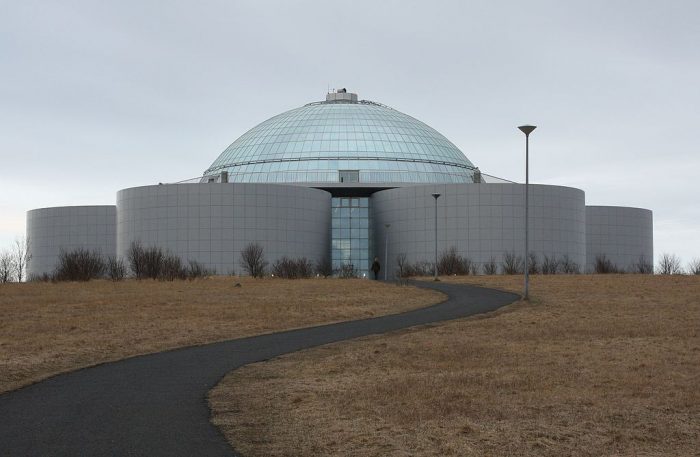The Icelandic Museum of Natural History recently signed a contract with Perla Nordursins holding company about housing large-scale exhibitions about Iceland’s nature in a newly renovated 2. floor of Perlan in Reykjavik, particularly for the 100-year birthday of Icelandic sovereignty next year.
Yesterday an exhibition about glaciers opened formally in Perlan in Reykjavik marking a milestone for the Icelandic Museum of Natural History’s long journey of obtaining a space for its displays and exhibitions. The Icelandic Museum of Natural History has been without a permanent exhibition space for years. It has been a main goal to house the displays since 2007 and this contract with Perlan is a step in that direction. The first exhibition revolves around glaciers but there is more to come so finally the public can enjoy the collection and knowledge the Icelandic Museum of Natural History has to offer.
Visitors were thrilled to learn about the glaciers in a simulated glacier cave in Perlan yesterday according to Mbl’s report. They describe the sensation of walking through the cave with the temperature, the presence of the ice and even it’s soundscape creating an overall impression for the magnitude of the disappearing glaciers. There are more exhibitions to come, curated with the two guiding principals of the museum in mind; to entertain and inform.
Perlan is a landmark building in Reykjavik, situated on the hill Oskjuhlid in central Reykjavik, where there had been hot water storage tanks for decades. In 1991 the tanks were updated and a hemispherical structure placed on top. Perlan has 10,000 cubic metres of exhibition space on the ground floor, known as the Winter Garden and a viewing deck on the fourth floor with six panoramic telescopes with information about the view around.
Despite being one of three key museums, a Central Museum according to Icelandic laws, the Icelandic Museum of Natural History has been with out a permanent display and exhibition space since its formal founding in 2007, but with roots all the way back to 1887–1889, when The Icelandic Natural History Society was founded.
It´s a public institution belonging to the Ministry of Education, Science and Culture and is one of three Central Museums in Iceland along with The National Museum of Iceland and The National Gallery of Iceland. Each Central Museum is a leading institution at national level within its field, providing counsel to other museums and promoting cooperation between them. The Central Museums also develop a coherent museum policy within their respective fields.

